Near the state line of Georgia and into North Carolina, lies an oasis. Made for those who have experienced nothing but pain at the hand of humans, those who live here, are safe. It’s thick with trees and lined with a blue-colored koi pond. In the silence of the woods, all you can hear is the chatter of chimpanzees.
Project Chimps is a 230-acre sanctuary located in Morganton, Georgia, providing lifelong care to former research chimpanzees in an outdoor setting. Here, these primates who were once used at the University of Louisiana for research, are able to play, explore and interact with each other for the first time.
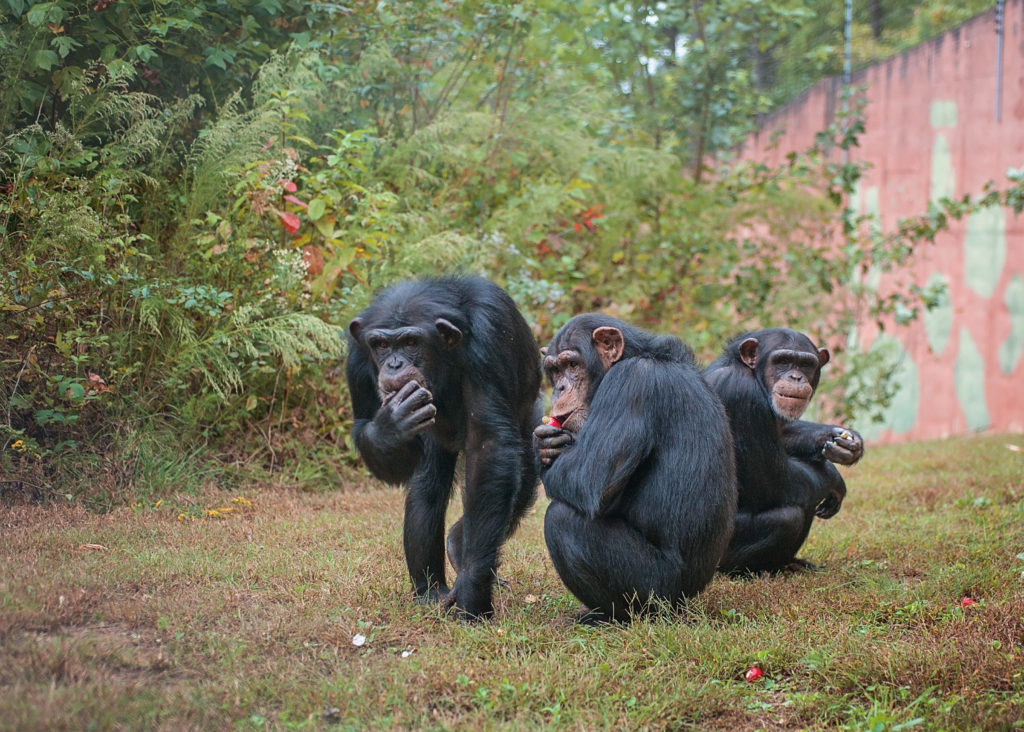
Although they’re usually closed to the public, on May 14th and 15th, Project Chimps hosted a discovery day, welcoming visitors to see the sanctuary for themselves. The weekend was filled with festivities, offering tours of the facilities, along with a small market and open hiking trails. It was a rare, and interesting glance into the world of Project Chimps, and the powerful good they do there.
Before coming to the sanctuary, the eighty chimps were used in lab research, living entirely inside, kept in metal cages. In the labs, cruelty was commonplace. Hercules and Leo, who were used in locomotion studies, were “forced to walk upright with electrodes embedded into their muscles.” Other chimps were used in studies with the Hepatitis C vaccines. According to the New England Anti-Vivisection Society (NEAVS), “Early chimpanzee experiments ran the gamut — from infecting them with virtually every infectious agent known, to using them in head crash and trauma studies, or as unwilling donors for organ transplants.”
How was this possible? Shouldn’t endangered animals such as chimps be protected from abuse?
For many years, chimpanzees in the wild and chimpanzees in captivity were considered to be two separate populations by the U.S. Fish and Wildlife Service. While populations in the wild were endangered, the captive population was considered to be stronger, therefore exempting any lab chimps from “endangered protection.” So although they were endangered in a natural setting, labs were still able to use and abuse chimps without regulation.
It wasn’t until a petition was filed by the National Anti-Vivisection Society that chimps rights started to change. With this petition, all invasive research would be banned for chimpanzees, along with interstate trade and commercial exploitation (or “acting”).
In 2015, the Fish and Wildlife Service filed a rule that obliged with the rules set out by the NAVS. It declared that all chimpanzees, including those in captivity, were endangered, therefore protecting them against any unethical practice.
With this big step for animal rights, activists were faced with a decision. Now that these chimps are barred from research, where will they end up? They couldn’t be returned to West Africa, their native land. After a life in the lab, survival would be impossible. A new form of care would have to be formed.
In 2015, Project Chimps, which was still in its infant stages, reached an agreement with the University of Lousiana’s New Iberia Research Center. Having the largest population of privately-owned chimpanzees in the nation, the NIRC decided that Project Chimps would provide sanctuary to every one of the chimpanzees- all 220 of them.

Two years later, the first wave of chimps were moved into the sanctuary. The 600+ mile trip was done in a specialized ‘trailer’ (closer to an RV), and for the first time, the chimps were able to see the outside world. Sitting in their swanky air-conditioned transporters, they watched the Alabama pines roll past, unaware of the destination they were heading.

When they arrived, it took several hours to load the chimps off the trailer and into their new indoor space. And while most celebrated by running into their new “party porch,” decorated for the occasion, Genesis, who was around eleven years old at the time, took her sweet time. With a handful of blankets in one hand, she observed the new setting, full of toys, snacks and plenty of enrichment. She was finally home.

Every one of the chimps has a very distinct personality, similar to what humans offer. While touring on a Discovery Day, a guide points out each of the chimps. Pointing to a laminated chart, she tells everyone who is who, then gives a quick backstory. As they lumber up to the glass, it seems as if you’re looking at a distant human, rather than an animal.
Panielle, who arrived in November 2018, carries a blanket like a child, sometimes wearing it as a cape. Jennifer, although she’s a “mid-ranking” chimp, is a member of the esteemed “Cool Girls Club.” Noel, who is known for her playful attitude, was raised as a pet — the only in the sanctuary. Greg, the “old-timer,” is known to be a mediator in his group. According to the Project Chimp’s website, “Greg is often the first one approached for reassurance or support by his groupmates during or after arguments.”
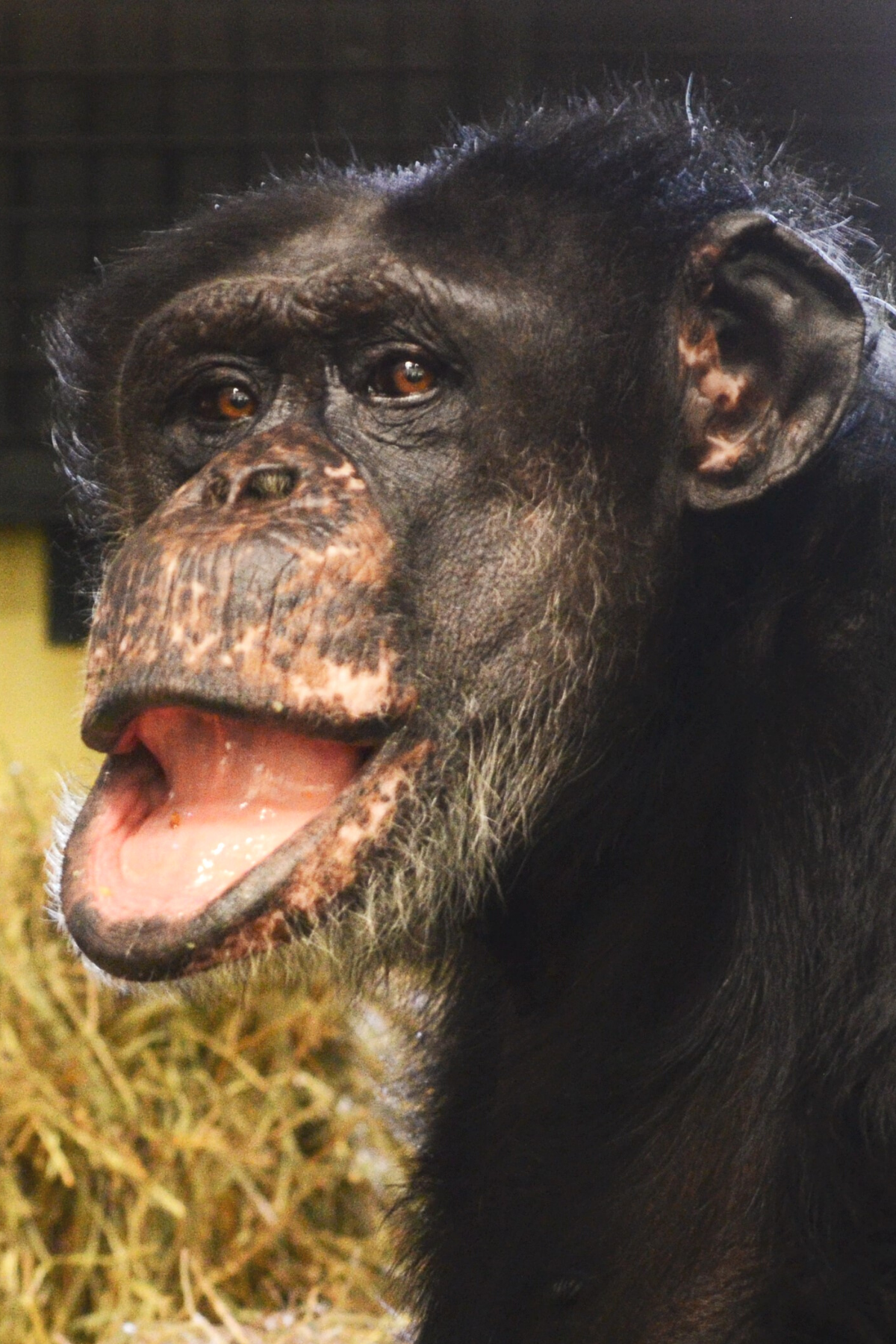
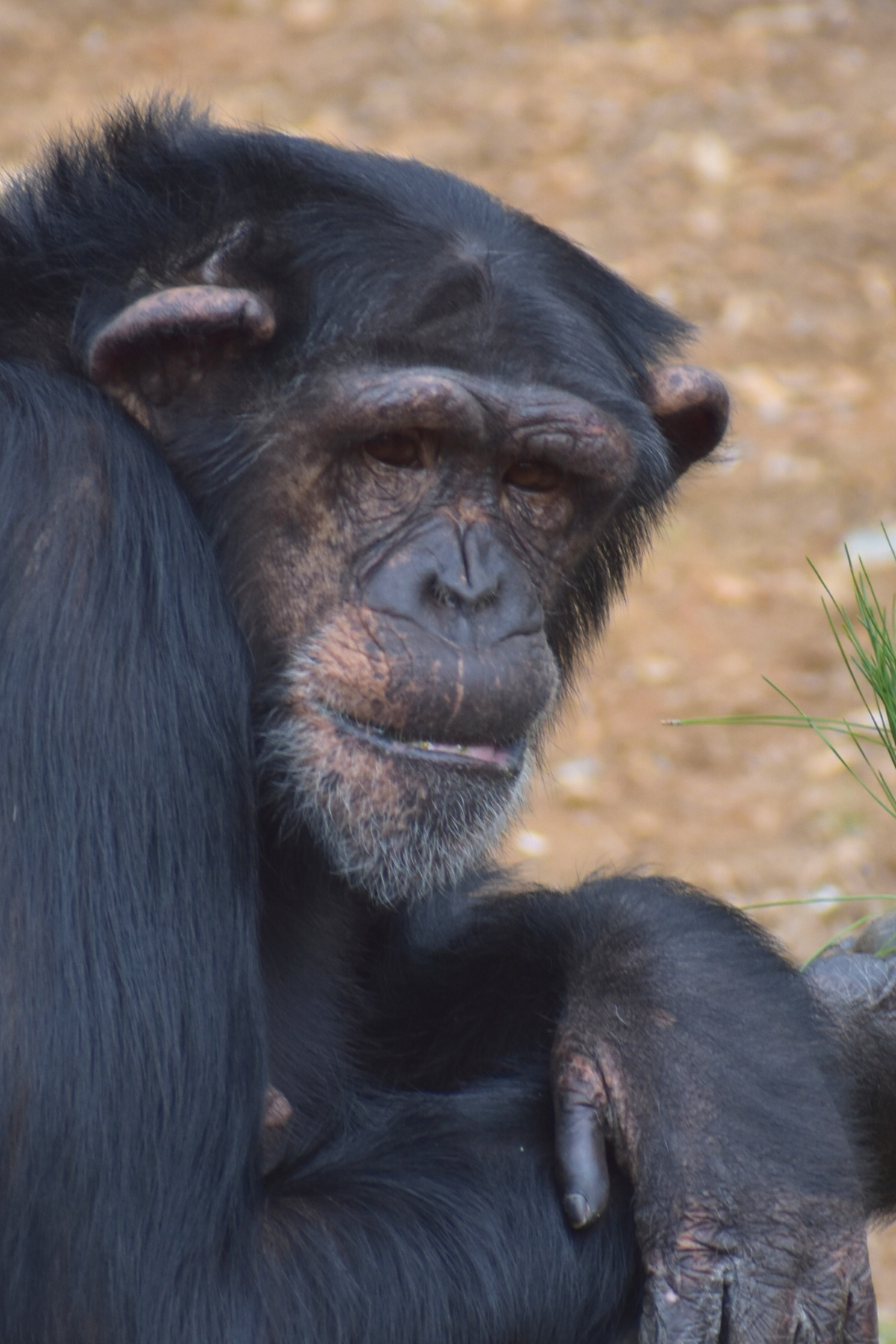
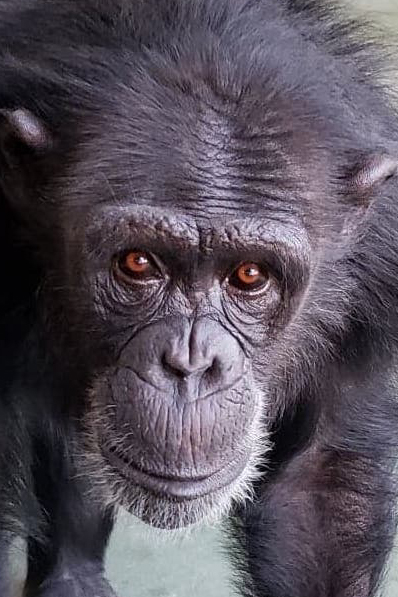
From left to right, meet Greg, Jennifer, and Panielle. Image courtesy of Project Chimps blog.
With the mental age of a 13–14-year-old and emotional age of a 2–3 year old, a lot of times, volunteers feel like they’re caring for elementary students. “It’s like taking care of 80 kids,” says volunteer Kristen Aziz, who’s responsible for anything from field trips to chimp care. “It’s just 80 kids without emotional filters.”
And if you’ve been with a child long enough for a few minutes, you understand a constant need for entertainment. Chimps are no different, and their environments reflect that.
Project Chimp’s enrichment program has a simple mission: to provide their chimpanzees with an enjoyable life “post lab.” Broken into four categories, “sensory, social, environmental, and puzzles,” Chimps are greeted with daily activities to keep their mind busy, both inside or outside. For some, this means playing with stuffed animals, or cuddling up with a blanket. Others build complex nests with hay and wood wool, then crack open a tough coconut. The options to stay happy are plenty, and always available. “Everything is now their choice,” says Aziz. “In the past, they didn’t have any choices. Now they do, whether that’s playing outside, or relaxing inside.”
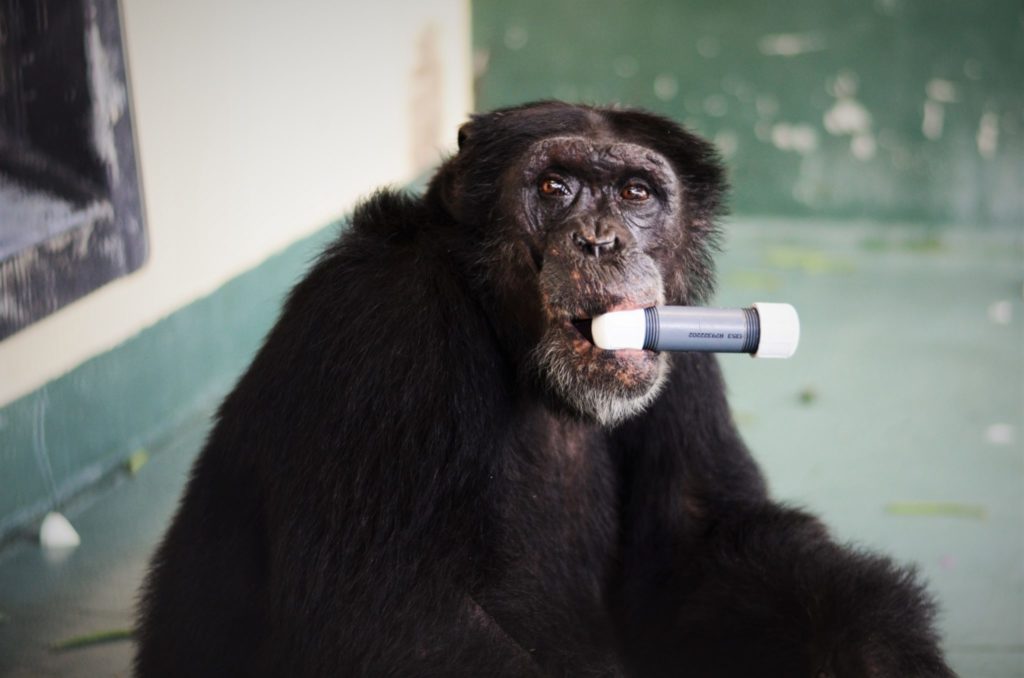
Food is an important factor into the chimp’s lives as well. Eating a vegan diet prepared in the Rachael Ray kitchen (that’s right, a state of the art facility designed by a celebrity cook), the residents of Project Chimps are always fed a variety of items. They’re fed three large meals a day, including snacks, with lunch scattered around their enclosures. “We’re encouraging additional foraging this way,” says Mimi Ackerman, who works in the kitchen as a volunteer. “This is what’s natural for them, which is what we aim for.”
Ackerman has been volunteering at Project Chimps since she found the facility through a simple internet search. “I Googled volunteering opportunities after retiring, and found the sanctuary,” she says. “I was like ‘What? A chimp sanctuary by my house? Absolutely!’”
She signed up immediately, then joined a group of what’s now over 400 volunteers, with about 60 working on a regular basis. Project Chimps runs solely on private donations, so volunteers are what makes the facility run smoothly. Many wear several hats as well, with the opportunity to explore chimp care, while also trying out other skills, like bee-keeping and event planning.
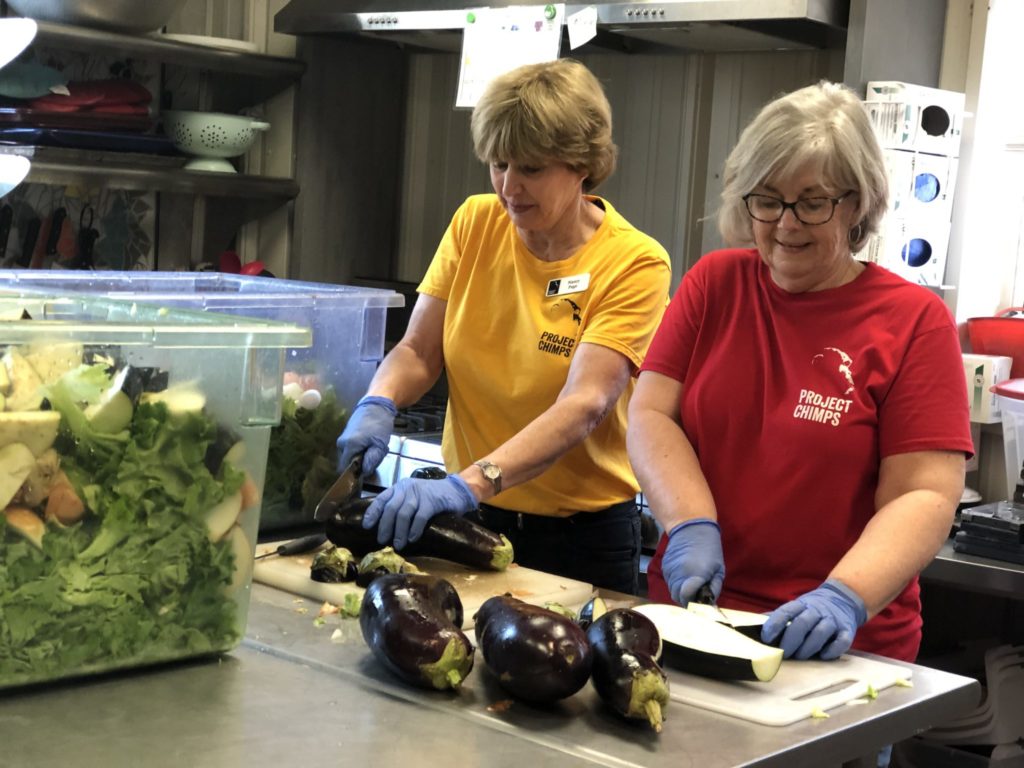
Kathryn Williams has been volunteering since she started three and a half years ago. She’s responsible for making the kitchen more efficient to work in, and wears the achievement with pride. She’s also a fan of observing the chimps, having “fallen in love with all of them” at a first glance.
“It could bring tears to my eyes talking about this,” she said regarding the mission of the organization. “They’ve spent their entire lives in labs. We’re giving them the freedom they deserve as a chimp. This is what nature wanted. Freedom, or at least as much as they can get after living in a lab.”
That’s what’s special about Project Chimps. While touring, you get the sense of a symbiotic relationship. The chimps, who were in once desperate need of help, are cared for by the many volunteers. And the volunteers, many of them searching for a new purpose, are exposed to a different way of living… the way of a chimp. “Here, you’re going to see a chimp acting like a chimp, simply because they can,” says Williams. “That’s what we’ve given them.”
To support Project Chimps, visit their website, and consider donating. If you’re interested in seeing the facilities yourself, look into their private tours, or visit them at their next Discovery Day on September 24 and 25.























